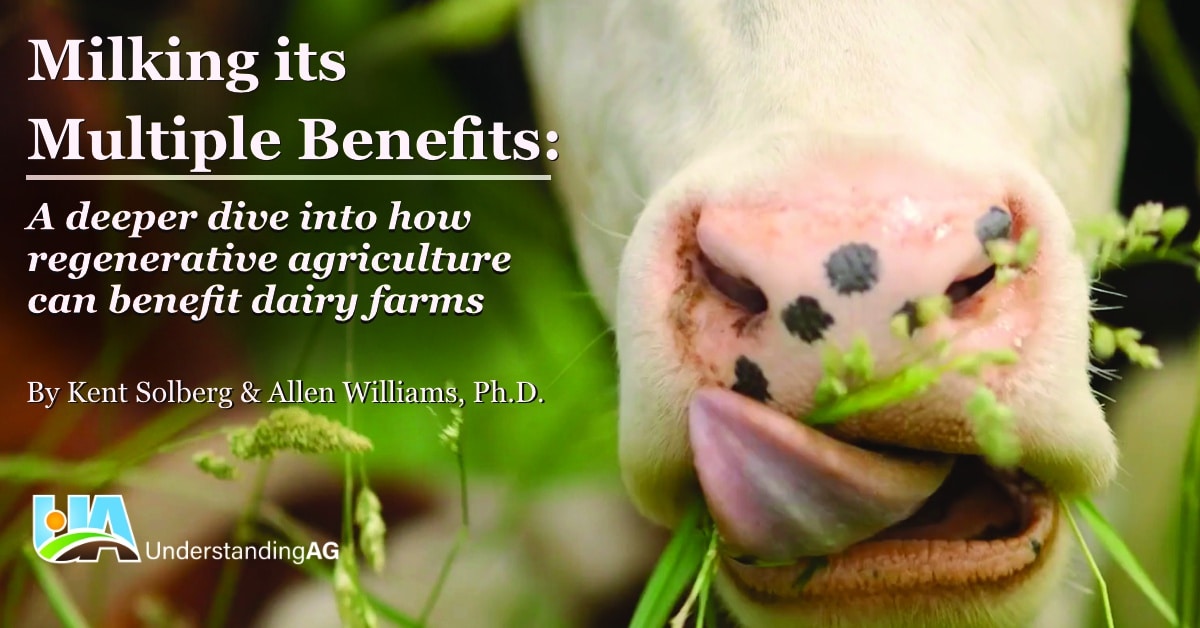
Milking its Multiple Benefits
On Jan. 24, Sen. Ron Johnson (R-WI) convened a group of world-renowned doctors and scientists in a discussion titled “Covid-19: A Second Opinion” in Washington DC.
April 1, 2023 | Source: Understanding Ag | by Kent Solberg and Allen Williams, Ph.D.
In our previous article, we provided an overview list of the many potential benefits dairy farms are observing as they move into regenerative agriculture. Dairy farms are uniquely suited to the principles of adaptive management because they have multiple livestock classes that can utilize a variety of feedstuffs. This provides opportunities for greater plant diversity in and within the crop rotation. Most dairies have both annual and perennial crops—and most dairies have a ready supply of livestock, some that can be readily integrated into cropping systems.
Livestock Integration
As discussed many times on this blog site, at our Soil Health Academies and in our webinars, livestock integration at the appropriate time and density is the force multiplier that allows farms the ability to exponentially advance soil health, especially when compared to farms that do not. The data demonstrate that the integration of livestock into a cropping system accelerates and amplifies restoration of soil health. This is best accomplished through adaptive grazing of diverse plant stands. By diverse, we mean representation of at least three species each of grasses, legumes and forbs (broad leaves) within that forage stand. This is applying the soil health principle of increasing diversity.
